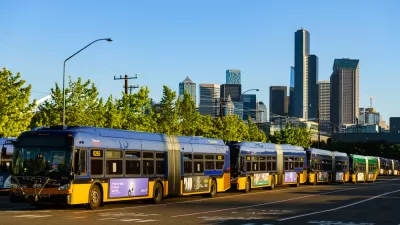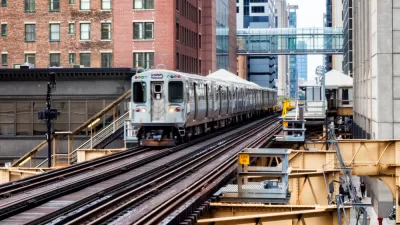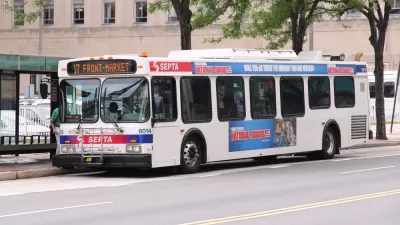As transit ridership remains tepid around the country, transit agencies are looking to diversify their funding sources and become less reliant on farebox revenue.

While transit agencies are bending over backwards to bring back passengers, they may have to accept that the post-pandemic future could mean fewer daily riders, writes Skylar Woodhouse in Bloomberg. Despite numerous efforts to reduce or eliminate fares, ridership continues to lag in most cities.
Jim Aloisi, a professor in transportation policy and planning at Massachusetts Institute of Technology, says “The problem is structural and it has to do with how agencies have relied too heavily on fare revenue.” According to Woodhouse, “Unless the government steps in or new sources of revenue are found, many agencies may be left with two choices. They can either cut service or raise fares, neither of which will help to bring riders back.” Bob Powers, head of Bay Area Rapid Transit, is calling for his agency to “to be funded more like an essential service, with less reliance on fare revenue.”
As Woodhouse notes, “The outlook appears grim but not all transit authorities are prepared to accept current ridership levels as permanent, especially with rising gas prices and increasing focus on sustainable transportation modes.”
“Nationwide, a key part in boosting ridership will be to increase service and eliminate delays,” but doing so will require new sources of funding and a model less heavily reliant on ridership revenue.
FULL STORY: Without Commuters, US Transit Agencies Are Running Out of Options

Planetizen Federal Action Tracker
A weekly monitor of how Trump’s orders and actions are impacting planners and planning in America.

San Francisco's School District Spent $105M To Build Affordable Housing for Teachers — And That's Just the Beginning
SFUSD joins a growing list of school districts using their land holdings to address housing affordability challenges faced by their own employees.

The Tiny, Adorable $7,000 Car Turning Japan Onto EVs
The single seat Mibot charges from a regular plug as quickly as an iPad, and is about half the price of an average EV.

With Protected Lanes, 460% More People Commute by Bike
For those needing more ammo, more data proving what we already knew is here.

In More Metros Than You’d Think, Suburbs are Now More Expensive Than the City
If you're moving to the burbs to save on square footage, data shows you should think again.

The States Losing Rural Delivery Rooms at an Alarming Pace
In some states, as few as 9% of rural hospitals still deliver babies. As a result, rising pre-term births, no adequate pre-term care and "harrowing" close calls are a growing reality.
Urban Design for Planners 1: Software Tools
This six-course series explores essential urban design concepts using open source software and equips planners with the tools they need to participate fully in the urban design process.
Planning for Universal Design
Learn the tools for implementing Universal Design in planning regulations.
Smith Gee Studio
City of Charlotte
City of Camden Redevelopment Agency
City of Astoria
Transportation Research & Education Center (TREC) at Portland State University
US High Speed Rail Association
City of Camden Redevelopment Agency
Municipality of Princeton (NJ)





























